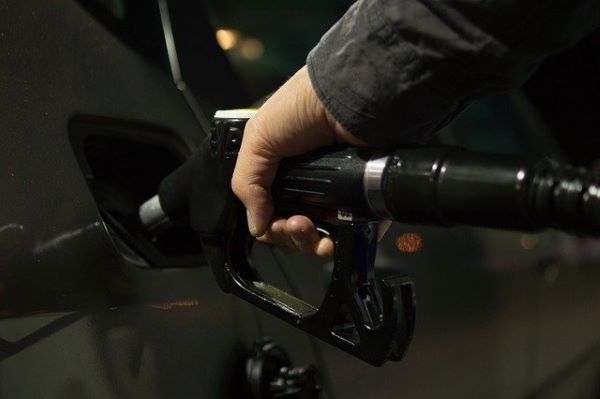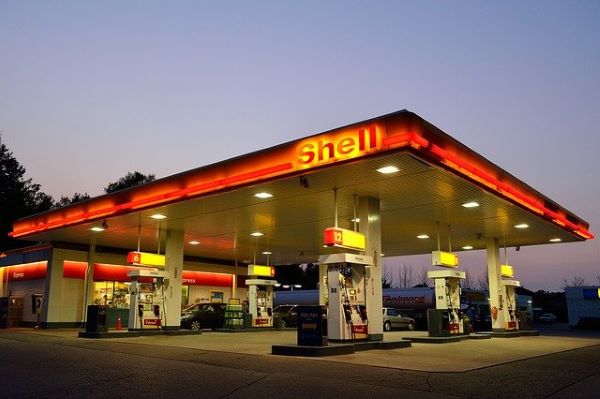Everything seems to be running fine when you pull your car up to the filling station, but what happens when the vehicle won’t start afterward? This alarming problem could be caused by a number of issues, some of which can be resolved quickly. We review the top eight reasons the car won’t start after getting gas in hopes that you can get back on the road.

If you have some basic mechanical knowledge, a few of these issues can be resolved quickly and safely. However, there are sometimes when you will want to seek out a professional mechanic for more support.
Table of Contents
8 Reasons Car Struggles to Start After Getting Gas
1. Clogged Fuel Filter
If the car struggles to start, you could have a clogged fuel filter. The fuel filter’s job is to clean the gas before it reaches the engine. However, dirt and debris can accumulate in the filter over time, creating a clog.
In many cases, you might have noticed several symptoms of this degraded performance before getting fuel. The car might have run poorly and engine performance was likely decreased. If the filter is completely blocked, the engine can’t get the fuel it needs and the vehicle won’t start.
You may also notice these symptoms leading up to the failure:
- Trouble accelerating
- Rough idle
- Engine sputters
- Stronger fumes coming from the exhaust
- Misfiring engine
In general, you should replace or clean the filter every 20,000 to 30,000 miles. You also want to ensure you are using top-tier fuel to keep the filter clean.
Here’s a video explanation of how to change your fuel filter. Remember, every type of car uses a different fuel filter, so you will want to reference the service manual for complete instructions.
2. Bad Fuel Pump
The fuel pump remains at cooler temperatures because of the gas in the tank. If the fuel level drops low, the pump can become too hot, leading to damage. This is one reason the car won’t start after running out of gas.
Because the fuel pump needs to be operational for the gas to get to the engine, you won’t be able to crank the engine. However, you might also have some warning signs that the fuel pump is going bad before its complete failure.
Look for these symptoms:
- Engine sputters while traveling at high speeds
- Whining noise coming from the fuel tank
- Vehicle stalls while traveling at highway speeds
- Loss of engine power when pushed
- Poor fuel economy
To diagnose the fuel pump, you need to check the pressure. What does good fuel pressure look like? With the help of your fuel pressure gauge, you can find the normal figures, but this will vary from vehicle to vehicle. For example, some older models with a throttle-body injection system only need 10 psi to operate correctly. In comparison, the multi-port fuel injection system could require 60 psi. Even year to year, the same model might require something different, so you must check the specifications in your service manual.
Replacing the automotive fuel pump isn’t always an easy job. However, here’s one example of how to get it done.
3. Dead/Corroded Battery
If the car won’t start after filling with gas, it’s possible that the problem has nothing to do with the fuel system. The car battery might have given out or you might be facing a poor connection. If the battery terminals are loose or corroded, the engine can’t get the power it needs to start.
Most batteries last between three and five years, but you should see signs of it failing before it quits. Watch for signs that the lighting is getting weaker or the accessories aren’t running as they should. If the battery is dead, it’s possible you could push the vehicle away from the gas pump and get another car to jump start it, or you could use a portable jump starter.
You can also clean off any corrosion with a simple baking soda and water mixture. Here’s an example of how to do that.
4. Dead Alternator
If the car has trouble starting after getting gas, it’s also possible that the alternator has failed. An automotive alternator is the part that charges the car battery while the engine is running. It’s also responsible for running the car’s accessories.
At first, you might think that a dead car battery is the problem. However, after jump starting the battery and turning the engine off again, you will find that it won’t restart. This is a clear indication that the alternator has failed.
To test the car alternator, you want to use a multimeter and follow these steps.
- Turn the engine off. Test the battery voltage. It should be between 12.5 and 12.8 volts. If it isn’t, you need to charge the battery first.
- With the engine running, check the voltage readings again. You should see the voltage increase, signifying that the alternator is good. If it doesn’t rise, you may have a defective alternator.
Here are some more tips that help you determine if you have a bad battery or alternator.
5. Bad Starter
Another reason the car won’t start after getting gas is because the starter failed. The starter motor is responsible for turning the engine and getting it running. Generally, when the starter fails, you hear a clicking sound after turning the key.
There are ways to start a car with a bad starter. In some cases, you might be able to bang on it to get it moving. Replacing the car starter isn’t something you are going to do at the gas pump, but it shouldn’t be complicated to do in a better setting. Here is some video instruction to get you started.
6. Lack of Spark
Spark plugs are responsible for igniting the air/fuel mixture in the engine. If one of the plugs has fouled or is contaminated, you might first notice a misfiring situation. As the condition worsens, it might not start at all.
However, spark plugs aren’t the only ignition part that could be to blame. You may also have a faulty ignition module, switch or circuit. With that said, spark plugs do need to be changed regularly as part of a tune-up. Check your vehicle owner’s manual to find out how often this service is recommended.
An adjustable spark plug tester can ensure each plug is offering the right amount of power. It can also be used to test the wires and ignition coil.
7. Issues with the Timing Belt
The timing belt or chain helps to sync the rotation occurring between the crankshaft and camshaft. However, it can wear and fail after many miles of use. A worn belt can even skip and lead to poor timing, which results in decreased performance or the inability to start the engine. Even worse, the bad belt can cause catastrophic engine damage, which might require a new motor if left unchecked.
In most cars, you can easily remove the timing cover and inspect the belt to see its condition. However, replacing the belt can be much harder, especially if you don’t have many mechanical skills. To replace the belt, you will also need to perform a leak-down test, check the compression and inspect all of the valves and pistons.
Here’s a video illustrating why it costs so much to have a timing belt replaced.
8. Failed Key Fob
One of the simplest solutions to why the car won’t start after filling with gas is because of a defective key fob. Modern proximity keys make it much easier to start your vehicle. However, these electronic devices can also lead to trouble if there is a problem.
Key fobs aren’t the most reliable way of starting a car, especially if it relies on a battery that has died. Replacing the key fob battery isn’t a complicated procedure, but most people don’t carry these batteries around with them.
Additionally, you might have lost the key fob, which creates a whole new string of problems. In this case, you either need to have the dealership get you a new key or you must call a locksmith, both of which can be expensive.
Steps to Follow When the Car Has Trouble Starting After Getting Gas
When your car won’t start and you are sitting at the gas pump, you need to make some quick decisions. To start, you can try the engine again, ensuring that it wasn’t just a fluke that kept it from turning over. Once you have done that, consider following these steps.
- Pop the hood and check the battery connections. Make sure everything is secure and there’s no corrosion preventing the engine from getting power.
- If the battery might be dead, you can ask someone nearby for a jump start or use your portable device to get things moving.
- You may be able to push the vehicle into a parking spot for further diagnosis. Either way, the vehicle must be moved, which might require a tow truck.
- If you aren’t able to get the car diagnosed quickly, you need to have it removed from the gas station. If you have AAA, you can call for a tow truck and have it delivered to your home for further repair or your local mechanic.
Some issues might be simple to resolve, while others listed above are going to be more complicated. Only tackle what you have the skills and tools to perform. Otherwise, you want to enlist the help of a professional mechanic.

Symptoms of Bad Gas
There’s always a possibility that you got bad gas with the last fuel up. The term “bad gas” simply means any fuel that doesn’t combust properly. Some of the top symptoms of bad gas include:
- Rough idle
- Trouble starting the engine
- Stalling
- Engine pinging noises
- Check Engine Light comes on
- Poor fuel economy
- Elevated emissions
Vehicles need to get power from the combustion process, which includes igniting the high-quality fuel that gets delivered from the pump. Whenever this process is disrupted, the vapors won’t combust correctly, leading to trouble with ignition. You should also notice reduced performance and hesitation of the engine. In the worst cases, there could be permanent damage done to the vehicle.
In general, gas contamination usually happens at the refinery or while it is being delivered to the gas station. Additionally, there could be a high water content that occurred during delivery or because it wasn’t stored correctly. If it was left in a corroded underground tank or there was a cap left unsealed, water can infiltrate the system. If sediment and other particles from the contaminated gas are not caught by the fuel nozzle or filter, they will build up in the engine and lead to a clog or permanent damage.
Here are some ways to avoid contaminated gas:
- Use the right octane fuel.
- Buy from a reputable station that uses top-tier fuel.
- If you don’t like the performance of the engine after getting fuel, avoid that station in the future.
FAQs
Do you have to turn your car off when getting gas?
Many people wonder should you turn your car off when getting gas? You might have noticed the signs at many gas stations that require the engine be turned off before pumping. This step helps to reduce the chances of a fire occurring because the gas vapors can ignite when coming in contact with static electricity. However, the chances of this happening are minimal and not something to spend a lot of time worrying about.
Why is my car sputtering when starting after getting gas?
If the car sputters when starting, you probably have an issue with the fuel system. It’s possible that you got a bad batch of fuel, leading to damage of the system. Additionally, any fault with the fuel filter, pump or injectors can lead to a sputtering condition. All of these parts work together to ensure a smooth delivery of fuel into the engine. It only takes a small clog or a buildup of debris to cause a malfunction.
What do I do if my car won’t start after running out of gas and refilling?
It’s possible that the fuel pump simply needs to be primed. How do you prime a fuel pump after the car runs out of gas? To prime the fuel pump, all you have to do is turn your ignition key on for a second. Then, turn it back off. By performing this procedure a few times, you will have primed the pump, making it easier to start the engine.
Can too much gas stop a car from starting?
If the car cranks but isn’t able to start, the problem could be contaminated gas. Bad gas won’t supply enough power to start the engine. However, the problem could also be due to any of the problems outlined above.
How long can gas sit in a car?
Regular gas can sit for three to six months without degrading. In comparison, diesel can last up to a year before it starts degrading. Organic ethanol can lose combustibility in just one to three months because of evaporation and oxidation. If you plan to put your vehicle in storage, it’s best to use a fuel stabilizer for protection.
Can bad gas cause my engine to sputter?
Most likely, the sputtering is caused by a faulty fuel system part, such as the injector, filter or pump. Whenever the engine can’t get the proper balance of fuel and air into the combustion chamber, the vehicle can start sputtering. Replacing the fuel filter is the cheapest and easiest solution, so it’s wise to start there.
Final Thoughts
If the car won’t start after getting gas, you are looking at a multitude of problems, but it’s most likely related to a fuel system issue. Run through our list of ideas to see if you can pinpoint the trouble and get back on the road.
